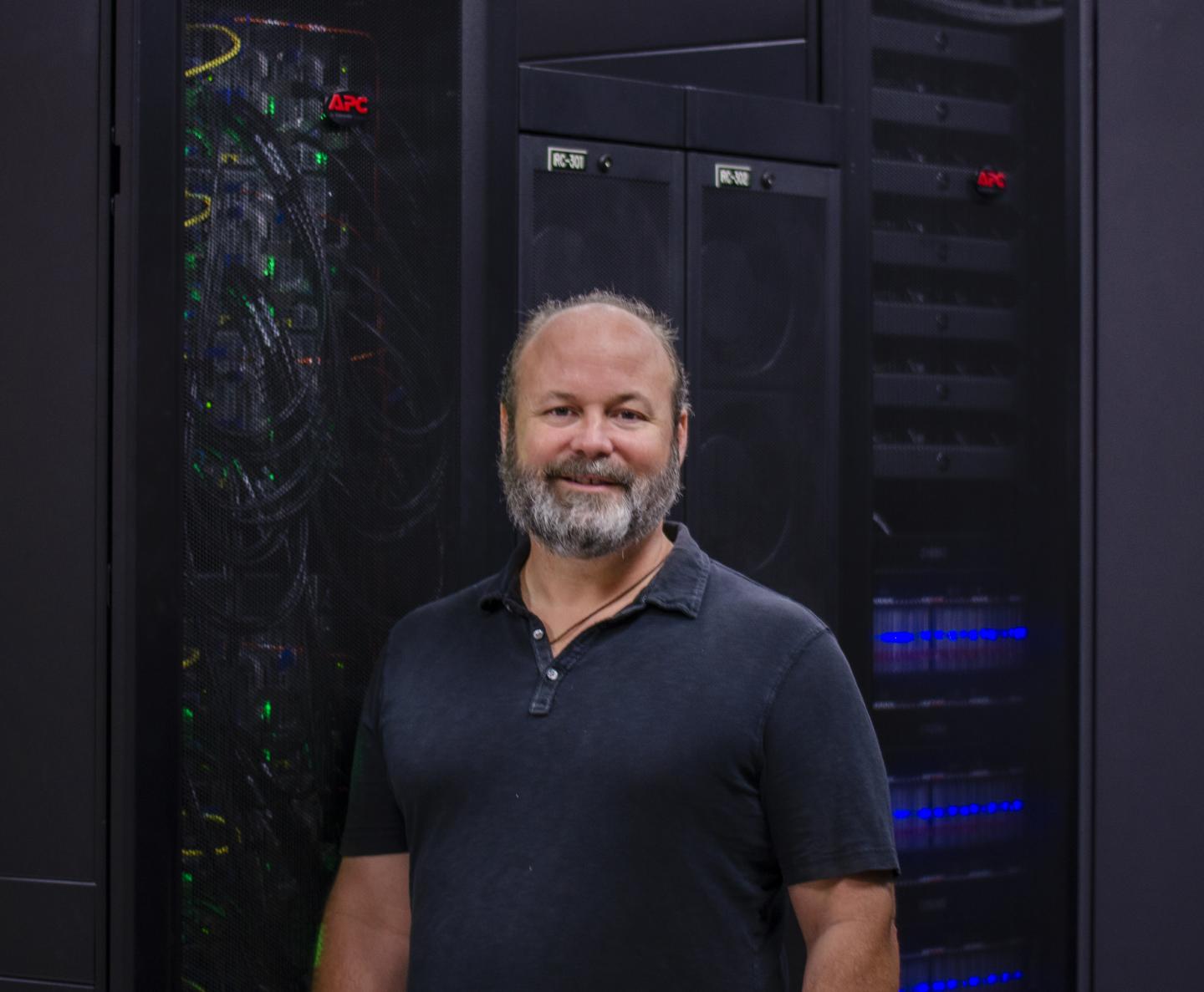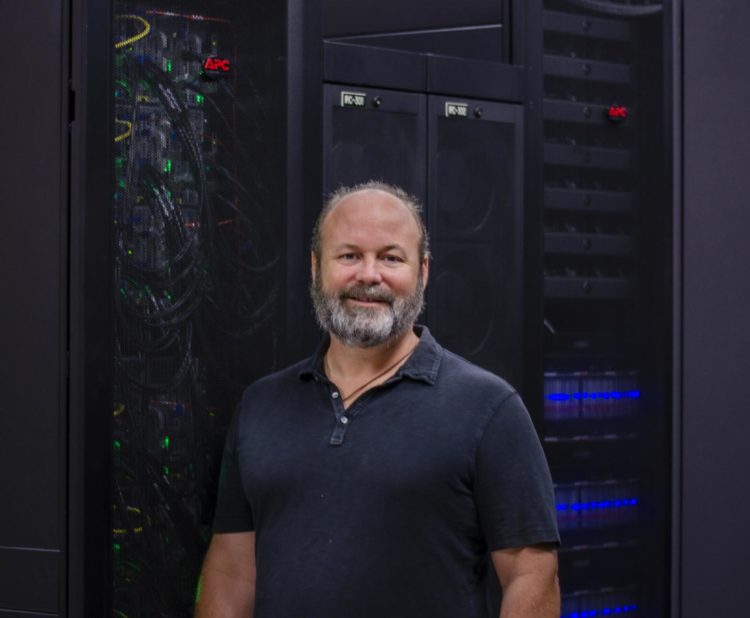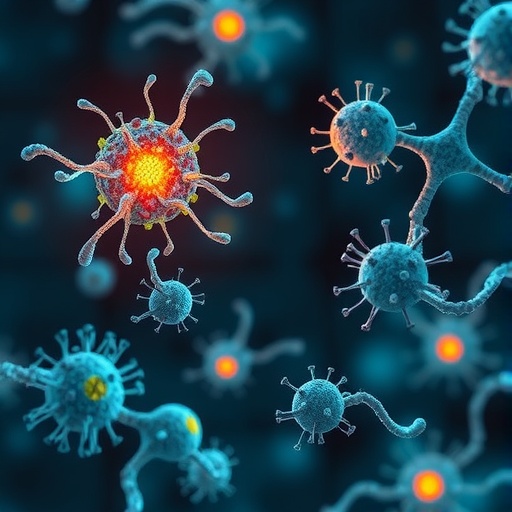New ‘meta-portal’ to provide researchers with access to analytics tools and data sets for private, public data

Credit: Jorge Salazar, TACC
Pain impacts nearly every individual at some point in their lives. With more than 25 million adults in the U.S. experiencing daily pain, the U.S. is facing a crisis due to the high prevalence of chronic pain and associated opioid use disorder and overdose deaths. However, the reasons why acute pain so frequently leads to chronic pain are poorly understood.
Today, the Texas Advanced Computing Center (TACC) announced its role as a key collaborator in a first-of-its-kind National Institutes of Health (NIH) grant to investigate and understand the biological characteristics underlying the transition from acute to chronic pain and the subsequent dependence or addiction to opioids.
The NIH Acute to Chronic Pain Signatures (A2CPS) program is supported by a four-year, $40 million grant and will be the most comprehensive study to date to investigate the connections of peripheral biology, brain, psychological, and bio-behavioral risk factors. A project of this magnitude has multiple stakeholders including biologists, clinicians, pain neuroscientists, geneticists, and data scientists — and at the very heart of the study is the patient who suffers with life-interrupting pain.
“Chronic pain is an epidemic that is costing the U.S. more than any other disease, both in economic terms — with total costs on the order of $600 billion annually — and in human suffering,” said Ari Kahn, the Human Translation Genomics Coordinator at TACC. Kahn is also a co-principal investigator (PI) on the A2CPS Data Integration Resource Center (DIRC) grant. The DIRC is based in the Department of Biostatistics at Johns Hopkins University Bloomberg School of Public Health and will be developed in collaboration with TACC.
“We need studies to identify ‘bio-signatures’ in humans that can tell us who is at risk for chronic pain, so we can more precisely match individuals with the treatments that will help them most,” Kahn said.
Composed of a consortium of organizations and scientists throughout the U.S. and Canada, A2CPS is part of the multi-pronged NIH HEAL (Helping to End Addiction Long-Term) initiative, an aggressive effort to speed scientific solutions to stem the national opioid public health crisis.
TACC will receive $2.3 million over four years to provide cyberinfrastructure and expertise that will serve as the central nexus for information, data, analysis, and collaboration.
The use of biomarkers has already revolutionized many fields of medicine — but pain, addiction, and mental health have lagged far behind. Echocardiograms and cardiac biochemical markers are routinely used to diagnose heart disease. Diabetes can be diagnosed with plasma glucose tests. Imaging is routinely used to help diagnose stroke, cancer, and other diseases. Viewed in this light, the need for biomarkers is especially pressing in pain research.
“These markers will characterize changes in the functions of our cells’ genetic machinery, our immune systems, and our brains,” Kahn said. “We hope to develop actionable human measures that predict the transition to chronic pain for medical and public health use. We also aim to understand these measures in terms of the biological systems involved, so that we can better understand the changes that drive chronic pathological pain.”
TACC will develop a meta-portal for the program — an intuitive web interface and analysis platform that provides access to powerful and extensible analytics tools and datasets, including private and public data.
“What is required is a platform for intellectual collaboration,” Kahn said, “where researchers can access and query data at multiple levels to further study and validate biomarkers of acute and chronic pain in diverse data types.”
TACC has a long track record of large-scale collaborations and has already built many cloud computing portals, such as DesignSafe for the natural hazards engineering community, and the Virtual Drug Discovery Portal, a graphical interface for identifying small molecules that bind to target proteins.
However, infrastructure must be more than simply the virtual machines on which tools run. “TACC creates cyberinfrastructure by combining software, computing, data storage, data repositories, visualization, expertise, and high speed networks that allow people to remotely connect to these things to innovate and make discoveries,” Kahn said.
The program’s first project is looking at a large cohort of 1,800 patients with acute pain associated with knee replacements. Over the course of the study, the program will also look at other types of injuries or surgeries such as musculoskeletal trauma and perioperative pain events.
Neuroimaging, biomedical measurements, sensory testing, and psychosocial assessments will be collected periodically after the acute pain event to form a comprehensive data set.
“The cloud infrastructure we’re providing will allow researchers to work on the data as if it’s right in front of them,” Kahn said. “Our computers are so much faster than what they would be working on in the labs, and the amount of space that’s required for storage is so much greater than what they have locally.”
“The results of what we’re doing will impact future clinical trials and be used as a springboard for developing new drugs and help to end long-term addiction,” Kahn concluded.
###
Media Contact
Faith Singer-Villalobos
[email protected]
512-663-7237
Original Source
https:/





